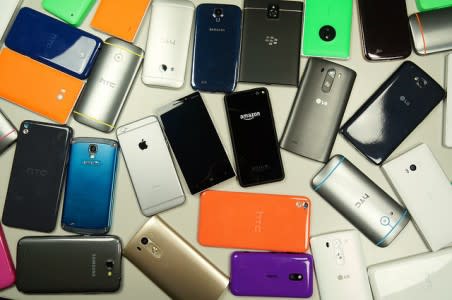A victory – for now — for Samsung in the smartphone wars
One year after the South Korean-based computer giant Samsung handed over $548 million to American rival Apple in a bitter, long-running patent rights battle, the Supreme Court on Tuesday unanimously gave Samsung a chance to get back at least some of that money. The Justices ruled that a lower court may have gone too far in declaring that Apple has a legal right to seize all of the profits that Samsung had made by selling any smartphone that used some of Apple’s patented designs.
(credit: TechStage)
This was not a final ruling for Samsung, however. The Justices returned the case of Samsung v. Apple to that lower court to decide, after the two sides file new legal arguments, whether the source of profits to be handed over to Apple must be only the Apple designs that Samsung copied, or the whole smartphone itself. The ruling said that the source legally can be either, but the Justices would not sort it out themselves.
The ruling, going beyond the high-stakes rivalry between the two leading makers of smartphones, appears to have the potential to limit the remedy that high-tech companies can gain when they sue each other for copying their innovative designs. If they prove infringement, they might be able to recover only the profits that can be traced to the specific design elements, not all of the profits made by selling the device, according to the new ruling written by Justice Sonia Sotomayor.
The Supreme Court had last ruled on design patent law in 1894 dealing with such simple objects as a rug or a saddle. Samsung had told the court it was necessary to reopen the issue of what the law covers, because of a recent expansion in getting patents on specific elements of complex products, like the smartphone.
The decision also appeared to clear the way for Samsung to go ahead with a claim, before the U.S. Patent Office, that the Apple design patents at issue are invalid. That issue was not covered by the new ruling, because the Justices had chosen to bypass that question when Samsung tried to raise it.
The new ruling was based on an interpretation of a federal law enacted in 1887 that provides protection for unique designs in an “article of manufacture.” Justice Sotomayor ruled that the phrase was broad enough to cover an entire product that is sold to consumers, or only one or more components of the product. It will now be the task of Samsung’s lawyers to show that, in this instance, it should have to give up profits only calculated on what it earned from using Apple design elements.
Apple has patents on three designs for its popular smartphone, the iPhone: its black rectangular shape with rounded corners, surrounding that front face with a rim or bezel to keep it together if the device is dropped, and a colorful grid of 16 icons. Apple claimed that Samsung infringed on all three when it produced several of its own smartphones. A federal appeals court, upholding a jury finding of infringement and awarding Apple a total of $369 million – based on the entire profit that the company had made from selling its versions. (Thar figure later grew with interest charges.)
Samsung took the case to the Supreme Court, arguing that the only “article of commerce” that it sold that could infringe were the specific design elements covered by Apple’s patents, so profits should be limited to what it earned from the sale of such elements.
Tuesday’s decision declared that the federal appeals court ruling in Apple’s favor was wrong in declaring that individual design components of the Samsung smartphones could not legally be treated as “articles of commerce.” But the court then went on to leave it to the lower courts, from here on, to devise a test for how to measure the allocation of profits if limited to the design elements alone.
This was one of three unanimous rulings that the Justices issued on Tuesday. In one of the others, the court gave federal prosecutors a significant victory when they file charges of “insider trading” against investors who use confidential corporate information in the stock markets. The court declared that those to whom the inside information is passed along, in a chain of tips, can be prosecuted for using the tip to invest even if the original insider did not get any money or other tangible value out of sharing the tip The decision in Salman v. United States was based primarily upon a ruling the court had issued in 1983 dealing with tips that are passed along to an insider’s relatives.
In the other decision, the court refused to block a claim by two insurance adjusters that the giant insurer, State Farm, had illegally told them to write up property losses from Hurricane Katrina as the result of flooding, not of high winds, so as to shift the payoff to the federal government as the backer of insurance policies for flooding only. Thar ruling came in the case State Farm v. Rigsby.
Legendary journalist Lyle Denniston is Constitution Daily’s Supreme Court correspondent. Denniston has written for us as a contributor since June 2011 and he has covered the Supreme Court since 1958. His work also appears on lyldenlawnews.com.
Recent Stories on Constitution Daily
Supreme Court to rule on police shooting
Constitution Check: Why is the Pentagon usually led by a civilian?


